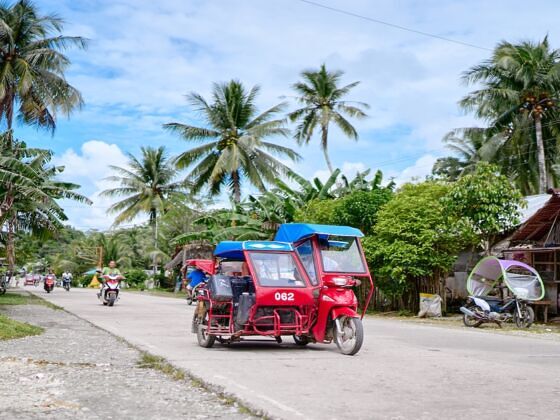In the Philippines, an archipelago known for its pristine beaches, turquoise waters, and rich cultural heritage, you wouldn’t think that a highway would be one of its coolest sights. Well, it is. Coconut Road is a scenic stretch of highway lined with towering coconut palms, lush greenery, and charming coastal towns. This captivating route, located in the eastern part of the country, offers visitors an opportunity to explore the beauty of the Philippines while also immersing themselves in local culture.


Coconut Road Is the Scenic, Palm Tree-Lined Route 66 of the Philippines
@matadornetwork We sent @matadornetwork #CreatorInResidence @Roemer Productions to venture through the natural beauty and charm of the Philippines 🇵🇭Coconut Road in the Philippines is a picturesque and breathtaking drive that takes you through the lush green countryside, coconut plantations, and scenic coastal villages. #philippinestiktok #coconutroad #travelphilippines #islandliving #coastallife ♬ original sound – Matador | Travel + Adventure
What is Coconut Road?
Coconut Road begins in the province of Quezon and stretches along the eastern coastline of Luzon, passing through the provinces of Camarines Norte, Camarines Sur, Albay, and Sorsogon. The route takes its name from the vast plantations of coconut palms that flank the highway, creating a mesmerizing tunnel-like effect as the fronds sway in the gentle sea breeze. The journey along the Coconut Road unveils stunning vistas of the Pacific Ocean, verdant rice paddies, and the majestic Mayon Volcano, offering a visual feast for travelers.
One of the highlights of the highway is the chance to visit the coastal towns that dot the route. Each town has its own character, from the vibrant markets of Daet to the historic churches of Naga and the tranquil beaches of Sorsogon. These towns provide a glimpse into the daily lives of the locals and offer a chance to sample authentic Filipino cuisine, including dishes made from the region’s abundant coconuts.
Nature lovers will also find plenty to enjoy along the Coconut Road. The route passes through several national parks and wildlife reserves, including the Bulusan Volcano Natural Park and the Catanduanes Biodiversity Park. These protected areas offer a chance to explore the region’s diverse flora and fauna, with opportunities for trekking, birdwatching, and wildlife spotting.
How to get there
Coconut Road begins in the province of Quezon, so you’ll need to travel from your arrival airport to the starting point of the route. From Manila, you can take a bus or hire a private vehicle to reach the town of Atimonan in Quezon Province, which is approximately 105 miles southeast of Manila. The journey takes around four hours by road. If you’re coming from Clark International Airport, the distance is about 150 miles, and the travel time is around five hours by road.
Once you’ve reached Atimonan, you can begin your journey along the scenic Coconut Road. You have several options for exploring the route, including renting a car, hiring a private driver, or taking public transport like busses or jeepneys. If you prefer to travel at your own pace and make frequent stops, renting a car or hiring a driver is the best option.